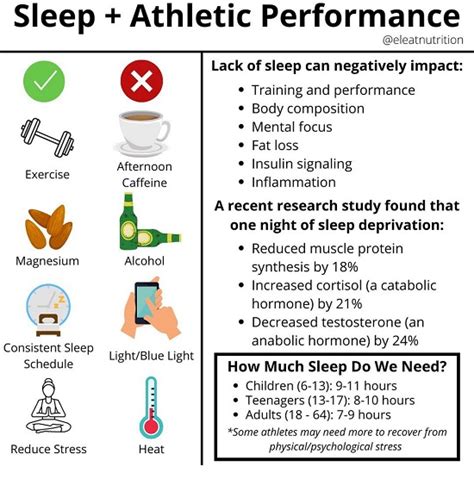What’s the optimal workout structure for peak male performance and recovery?

Building the Blueprint: Foundations of Male Peak Performance
For men seeking to maximize their physical potential, a haphazard approach to training simply won’t suffice. Optimal performance isn’t just about lifting heavy; it’s about intelligent programming that stimulates growth, enhances strength, boosts endurance, and crucially, facilitates rapid and complete recovery. This guide delves into the optimal workout structure designed to achieve peak male performance, considering the unique physiological factors at play.

Core Principles for Sustained Progress
Any effective training regimen for men must be built upon several non-negotiable principles:
- Progressive Overload: The bedrock of strength and muscle gain. Continuously challenge your body by increasing weight, reps, sets, decreasing rest, or improving technique over time.
- Specificity: Train for your goals. If you want to get stronger, lift heavy. If you want endurance, train with higher reps or longer durations.
- Volume & Intensity Balance: Finding the sweet spot where you apply enough stimulus for adaptation without overtraining. High intensity often means lower volume, and vice versa.
- Periodization: Systematically varying training variables over time (e.g., intensity, volume, exercise selection) to prevent plateaus, reduce injury risk, and optimize peak performance phases.
- Individualization: What works for one person may not work for another. Listen to your body and adjust accordingly.
Key Components of an Optimal Workout Structure
A holistic approach integrates various training modalities:
1. Strength Training (Resistance Training)
This is paramount for male performance, driving muscle hypertrophy, strength gains, bone density, and favorable hormone profiles. Focus on compound movements that engage multiple muscle groups:
- Lower Body: Squats (back, front, goblet), Deadlifts (conventional, sumo, RDLs), Lunges, Leg Press.
- Upper Body Push: Bench Press (barbell, dumbbell), Overhead Press, Dips, Push-ups.
- Upper Body Pull: Pull-ups, Rows (barbell, dumbbell, cable), Lat Pulldowns.
Aim for 2-4 strength sessions per week, hitting each major muscle group 2-3 times.
2. Cardiovascular Training
Crucial for heart health, endurance, and efficient recovery. Integrate both:
- High-Intensity Interval Training (HIIT): Short bursts of intense exercise followed by brief recovery. Excellent for improving VO2 max and fat burning. (1-2 sessions/week).
- Low-Intensity Steady State (LISS): Longer duration, lower intensity cardio. Great for active recovery and improving aerobic base without excessive fatigue. (1-2 sessions/week).
3. Flexibility & Mobility
Often overlooked but vital for injury prevention, range of motion, and movement efficiency. Incorporate dynamic warm-ups, static stretching post-workout, and dedicated mobility work.
4. Core Strength
A strong core is the foundation for almost all athletic movements and prevents back pain. Include exercises like planks, dead bugs, bird-dog, and anti-rotation movements.

Optimal Workout Split Strategies
How you divide your training days can significantly impact recovery and performance:
- Full Body (3x/week): Ideal for beginners and those with limited training days. Allows for high frequency of muscle group stimulation. Example: Mon/Wed/Fri.
- Upper/Lower Split (4x/week): Popular for intermediates. Each muscle group trained twice a week. Example: Mon (Upper), Tue (Lower), Thu (Upper), Fri (Lower).
- Push/Pull/Legs (PPL) (3-6x/week): Highly effective for muscle gain. Can be done 2x per week (PPLPPL) for higher frequency. Example: Mon (Push), Tue (Pull), Wed (Legs), Thu (Rest), Fri (Push), Sat (Pull), Sun (Legs or Rest).
- Body Part Split (e.g., Chest/Tris, Back/Bis, Legs/Shoulders): Less optimal for performance and recovery for natural lifters due to lower frequency, but can be used by advanced individuals or for specific hypertrophy phases.
The optimal choice depends on your experience, recovery capacity, and schedule.

The Cornerstone of Performance: Recovery
Training only provides the stimulus; recovery drives adaptation. Neglecting it sabotages performance and health.
1. Sleep
Aim for 7-9 hours of quality sleep per night. This is when muscle repair, hormone regulation (including testosterone), and central nervous system recovery occur.
2. Nutrition
- Protein: Essential for muscle repair and growth (1.6-2.2g per kg body weight).
- Carbohydrates: Fuel for workouts and glycogen replenishment (especially post-workout).
- Healthy Fats: Crucial for hormone production and overall health.
- Micronutrients: Adequate intake of vitamins and minerals supports all bodily functions.
3. Hydration
Drink plenty of water throughout the day. Dehydration impairs performance, recovery, and cognitive function.
4. Active Recovery & Deload Weeks
Light activity (walking, stretching, foam rolling) can aid blood flow and reduce soreness. Incorporate a deload week (reduced volume/intensity) every 4-8 weeks to allow for full systemic recovery and supercompensation.
5. Stress Management
Chronic stress elevates cortisol, which can hinder recovery and muscle growth. Practices like meditation, mindfulness, and hobbies are vital.

Hormonal Considerations for Men
Optimizing male performance and recovery inherently involves supporting a healthy hormonal environment. Adequate sleep, proper nutrition (especially healthy fats and micronutrients like Zinc, Magnesium, Vitamin D), and managing stress all contribute to healthy testosterone levels and a balanced cortisol response. Overtraining can suppress testosterone and elevate cortisol, making intelligent programming and recovery even more critical.
Putting It All Together: An Example Weekly Structure
Here’s a sample Upper/Lower split for an intermediate male, emphasizing both performance and recovery:
- Monday: Upper Body (Strength Focus)
- Tuesday: Lower Body (Strength Focus)
- Wednesday: Active Recovery / LISS Cardio / Mobility
- Thursday: Upper Body (Hypertrophy Focus)
- Friday: Lower Body (Hypertrophy Focus)
- Saturday: HIIT or Moderate LISS Cardio / Core Work
- Sunday: Rest & Full Recovery
Remember to adjust sets, reps, and exercise selection based on your specific goals and how your body responds.

Conclusion: Consistency and Customization
The optimal workout structure for peak male performance and recovery isn’t a one-size-fits-all solution, but rather a framework built on sound physiological principles. It demands a balanced approach to intense training, strategic recovery, and meticulous nutritional support. By prioritizing progressive overload, integrating diverse training modalities, ensuring adequate rest, and listening to your body, men can unlock their true physical potential, maintain long-term health, and consistently perform at their peak.








